Magnesium sulphate, commonly called Epsom salt, is an essential nutrient in gardening. When it dissolves in water, the compound releases minerals that are very important for plant growth and development, which include tomato and pepper plants. Many improvements can occur in the case of using Epsom salt for such particular tomatoes and peppers as including correcting magnesium deficiency on soil therefore photosynthesis becomes better and better with more robust foliage, resulting in an increased yield of fruits of higher quality. This article will discuss the benefits of using Epsom salts on tomatoes and peppers and how you can effectively include them in your gardening routine to maximize their potential.
What Are the Benefits of Using Epsom Salt on Tomato and Pepper Plants?
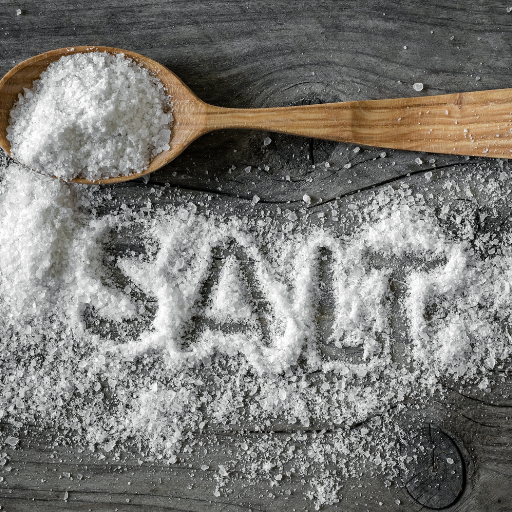
The key advantage of using Epsom salt with tomato and pepper plants is its magnesium enhancement, which is an important mineral for these plants. Magnesium plays an important role in photosynthesis by assisting in the synthesis of chlorophyll, which enables the plant to convert light into energy. The result of this improved photosynthetic process is robust foliage. Moreover, magnesium ensures effective nutrient absorption. Other valuable minerals such as phosphorous and nitrogen are easily absorbed by the plants leading to stronger ones with increased disease resistance and pest tolerance. Additionally, the sulfate part found in Epsom salt helps in building amino acids and vitamins which makes fruits grow well hence improving overall yield and quality of tomatoes and peppers. Regular use of Epsom salts will therefore result into healthier more productive plants.
How Does Epsom Salt Improve Tomato and Pepper Growth?
The chemical composition of magnesium sulfate or Epsom salt (MgSO₄·7H₂O) accounts for its diverse mechanisms through which it improves tomato and pepper growth.The component on magnesium has been understood to be essential in ensuring chlorophyll production hence directly determining how efficient photosynthesis is Enhanced photosynthesis allows plants to generate more glucose, which is critical for energy and growth. For example, magnesium concentrations between 0.2% – 0.5% of dry weight should be maintained in leaves so as to optimize the process of photosynthesis.
Furthermore, other nutrients such as nitrogen required for vegetative growth or root development (phosphorus) can only be assimilated when there are enough amounts of Mg²⁺ ions while SO₄²⁻ ions work as precursors for cysteine, methionine that break down into proteins used in making enzymes needed by plants during both normal development stages or under stress conditions (). Current studies have established that soil sulphate levels should range from 20-40 ppm because anything above this level is toxic.
It has also been observed that Epsom salt application improves fruit set quality in tomato and pepper plants, which can be attributed to its improved nutrient availability and metabolic effects. Biweekly foliar sprays or soil applications of one tablespoon per gallon of water enhances plant vigors and abiotic stress resistance.
What nutrients do tomato and pepper plants receive from Epsom salt?
Magnesium sulfate, commonly called Epsom salt, provides two important elements for tomatoes and peppers: Magnesium (Mg) and sulfur (S). Magnesium is necessary for the synthesis of chlorophyll which enhances photosynthesis and energy production leading to robust growth as well as fruit development. It also plays a key role in absorbing other nutrients such as phosphorous required for root development and nitrogen needed for shoot development. Sulfur helps in the production of amino acids, proteins and enzymes that are necessary for overall plant metabolism and stress tolerance. The right use of Epsom salts ensures there is the right balance between these minerals resulting in healthier plants that produce more than when they lack.
Does Epsom Salt Help Tomato And Pepper Plant Diseases
Epsom salt has been found to help in reducing some physiological disorders like blossom end rot and leaf yellowing caused by nutrient deficiencies in tomato and pepper plants. For instance, supplying magnesium and sulphur can correct nutrient imbalances that may predispose crops to diseases. Nevertheless, it is worth noting that though it aids in addressing nutrient-related problems associated with plant disease control, it should not be used against fungal, bacterial, or viral infections. To fully manage vegetable diseases effectively, an integrated approach which involves proper sanitation, crop rotation along with judicious use of fungicide has to be implemented.
How Do You Apply Epsom Salt in the Garden?
Applying Epsom salt to the garden is determined by the type of plant it is intended for. Dissolve 1 tablespoon of Epsom salt in a gallon of water and apply directly on the soil around each tomato or pepper plant base every other week. This mixture can also be used as foliar spray, ensuring even nutrient distribution and fast uptake. For ordinary garden use, put ½ cup of Epsom salt into the soil at planting time of each standard-sized shrub or plant. After application, remember to water thoroughly so that magnesium and sulfur can move toward the root zone. Ongoing monitoring will help optimize impact based on plant response.
Epsom Salt as a Soil Amendment
Epsom salts are chemically known as magnesium sulfate and can serve as an effective soil amendment for better growth. Its application on soil primarily addresses magnesium and sulfur deficiencies among others which are essential nutrients for healthy plants. In amending soil with Epsom salt, evenly distribute one to two tablespoons over one square foot of soil and mix thoroughly into top six to eight inches of soul thereby improving nutrient availability and uptake. Magnesium plays a major role in chlorophyll production necessary for photosynthesis while sulfur helps in enzyme function and protein synthesis. Regularly amending with Epsom Salt improves soils’ quality, increases nutrient contents, and enhances development of strong plants.
Foliar Application sprays with Epsom Salt
To create an efficient foliar spray using epsom salt, dissolve one tablespoonful quantity from a gallon full of water containing three thousand seven hundred ninety-three point nine grams/millimeters (3793.9 g/ml) sodium chloride dissolved in distilled water then add this liquid into another quantity measuring exactly thirteen galons (13 gals). The solution has to be concentrated enough without being too weakly prepared or overly concentrated which would otherwise destroy crops completely within no matter how long it was applied without any further notice. The spray can be done early in the morning or late in the evening to reduce evaporation and increase absorption into plants. Spray onto foliage ensuring complete coverage, even on the undersides of leaves where pests often hide. Foliar sprays allow for rapid nutrient uptake as the pores on the leaf surfaces (stomata) absorb the magnesium and sulfur directly. This is especially useful for fast correction of deficiencies. For consistent outcomes, foliar spray every two weeks while closely observing plant health and growth patterns every two weeks.
How much Epsom salt should be used per plant?
The amount of Epsom salt to be used per plant varies with the type of plant and its nutrient demand.
- For tomatoes and peppers, dissolve one tablespoon of Epsom salt in one gallon of water and use it around the plants about once a month. Stop blossom end rot and boost growth. Alternatively, sprinkle one tablespoon of Epsom salt at the base of each plant and water it in.
- In roses, a bit more is required. When planting, mix half a cupful of Epsom salt into the soil at the base of your plant. Apply 1/4 cupfuls of Epsom salts to rose base during spring and summer growing seasons for uniform application and thorough watering.
- On houseplants: This is usually diluted further since indoor plants have minimum requirements. Thus, pour two spoonfuls into a gallon jar filled with water; then, every four weeks, apply it to the plants as needed. It helps get rid of leaf chlorosis while ensuring that leaves will grow healthily without any hindrance.
Technical Parameters:
- Tomatoes and Peppers: 1 tablespoon/gallon; frequency: monthly
- Roses: Initial planting: 1/2 cup/plant; established plants: 1/4 cup/plant, spring and summer
- Houseplants: 2 tablespoons/gallon; frequency: monthly
These recommendations ensure optimal availability to nutrients thus lowering deficiency risks consequently enhancing general health status as well as productivity levels in crops grown.
What is the Best Time to Apply Epsom Salt to Tomato and Pepper Plants?
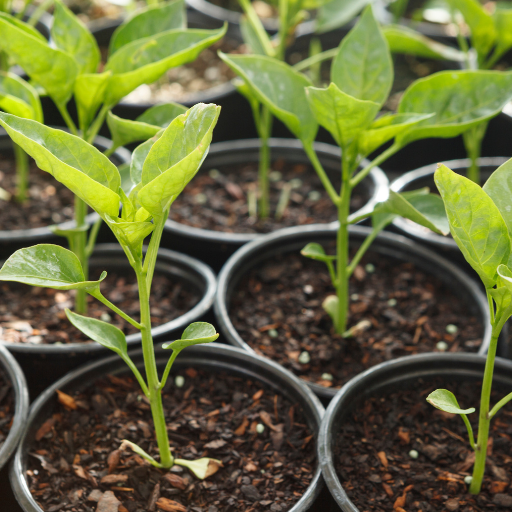
It is while the plants are blossoming and the fruits are just starting to set that one should apply Epsom salt on tomato and pepper plants. Apply after planting, then continue every month throughout the growing season. It is also very useful to use Epsom salts when signs of magnesium deficiency initially appear on the plant’s leaves, such as yellowing. For best absorption, it is recommended that one applies early in the morning or late afternoon as this allows them to be taken up without danger of burning due to sun scorching.
During Planting
Adding Epsom salt into the soil at the planting hole during planting ensures immediate availability of magnesium and sulfate for young plants. This can be achieved by putting 1 tablespoon in base of each tomato or pepper planting hole with some soil mixed around it. This first dose assists in creation of strong root system and sustains initial growth stages of the plant. As seedlings develop, a monthly application per plant with 1 tablespoon of Epsom salts dissolved in a gallon of water can go on to provide continued healthy growth and enhanced fruit production.
When Plants Are Blooming
At blooming stage, applying Epsom salt significantly helps flower formation and fruit setting. Research indicates that 1 tablespoonful dissolved in a gallon of water sprayed over leaves or applied directly on soil improves levels of magnesium which aid photosynthesis and make blooms healthier. These applications should take place every two weeks over flowering time enhancing nutrient uptake efficiency by increasing uptake rates. Proper regularity in ensuring Epsom salt application against blossom end rot infection during this critical growth period will result into more harvests.
Throughout the Growing Season
Consistent replenishment through Epsom salt applications all year round provides steady nutrition support for keeping enough magnesium within soils thus maintaining general good health for plants. According to studies, like incorporating one tablespoon per gallon water each month as an example, regular application rates using Epson salt will maintain vigorous growth and enhance nutrient uptake in order to facilitate both vegetative growth and fruit production. In order to ensure optimal feeding without the risk of over-fertilization, it is therefore advisable to monitor plant health and soil conditions to determine the frequency and dosage changes that may be required. By continuously doing this throughout the season, one ensures that there is strong development hence a better harvest at the end of season.
How to Identify Magnesium Deficiency in Tomato and Pepper Plants?
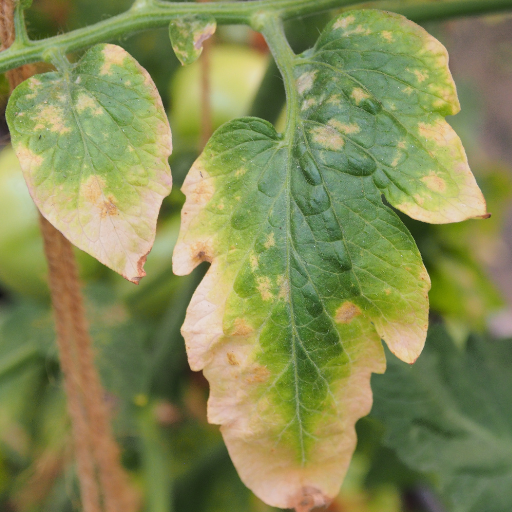
In tomato and pepper plants, magnesium deficiency usually exhibits in various forms of symptoms. It is most often indicated by interveinal chlorosis where yellowing occurs in the areas between green veins of older leaves. Starting from the margins, this yellowing proceeds inwards. Additionally, affected leaves tend to curl upwards and develop a blotchy appearance. In the worst cases, leaf necrosis may occur resulting in premature leaf fall off. Early recognition of these signs and taking corrective measures such as use of Epsom salt or other sources rich in magnesium can help growers prevent further plant stress and ensure healthy growth.
Magnesium Deficiency Signs
Yellowing begins at leaf tips and then spreads to the middle portion, hence forming a U-shaped pattern that signifies magnesium deficiency, which starts with interveinal yellowing on older leaves among tomatoes and peppers. Another visible sign is curliness along leaf edges, mainly upwards. These leaves are also prone to mottling with different shades of green and yellow indicating advanced stage of the disease More severe deficiencies result in necrosis, where leaf tissues begin to die, leading to premature leaf drop. A tablespoonful of Epsom salt dissolved into a gallon of water is recommended for soil drench or foliar application done monthly as advised for proper uptake; it’s important to monitor them constantly through soil testing that gives correction steps.
How does Epsom Salt Treat Magnesium Deficiency?
One way that Magnesium deficiency can be treated involves using Epsom salt, which is chemically known as Magnesium Sulfate (MgSO4). When it dissolves into water and is applied to the soil, it goes through dissociation giving rise to ions obtained from magnesium (Mg²⁺)and sulphate (SO₄²⁻)thus providing a direct supply of magnesium necessary for absorption by roots from plants. Therefore,the role played by this ion is important when it comes to production of chlorophyll which is crucial for photosynthesis. The recommended rate of applying Epsom salt is usually 1 tablespoon per gallon of water; this solution can be applied as a soil drench or foliar spray. For optimum uptake, gardeners need to apply this solution once in a month and ensure that it covers the plants well. It’s important to monitor them constantly through soil testing that gives correction steps.
Soil Testing for Magnesium Levels
For accurate soil testing for magnesium levels, professional laboratory analysis or at-home soil testing kits may be used by gardeners. In most cases, professional soil tests are done by collecting soil samples and delivering them to labs where they are taken through comprehensive nutrient assessment including magnesium. They have high precision levels hence providing detailed reports on the content of the soils and specific levels of nutrients in each beyond just concentrating on one element such as magnesium. Alternatively, at-home kits make it easy for one to do a self-test quickly without necessarily sending samples to laboratories where results take long.These usually contain a container with sample from farms, test solutions and color charts showing results side by side Following instruction given with the kit will enable gardeners have an idea about how much magnesium their soils contain.Sample collection should cut across different parts of the same farm so as to get precise findings.Timely soil test either by using professional laboratories or home kit keeps soils in optimal condition thereby ensuring plants receive all required nutrients that promote growth and good health.
Should epsom salt Be Used as a fertilizer?
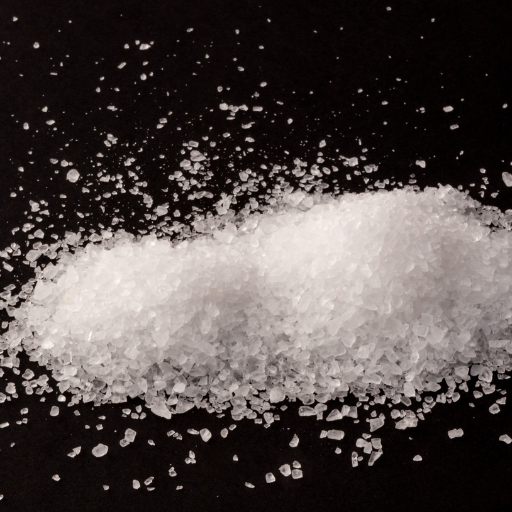
Magnesium sulfate or Epsom salt, is said to be an optional fertilizer for gardens. It effectiveness remains a contentious issue but some reputable sources claim that certain situations can be enhanced by it especially for plants suffering from magnesium deficiency such as yellow leaves and slow growth. Magnesium is an essential element required in the production of chlorophyll, a pigment molecule of photosynthesis and other enzymatic processes in plants. When used properly, these deficiencies are temporarily solved by Epsom salt.
Routine use of this substance as a general fertilizer however has been opposed by many experts. Over using it could lead to imbalances in soil components thereby affecting plant health and soil structure. The real magnesium needs of your soil are best determined through conducting soil tests. Rich soils may not need extra magnesium addition while haphazard application of the Epsom salt may even worsen prevailing problems with the soil. The most effective method when used in gardening is targeting based on soil text results when applying Epsom salts to avoid overusing them leading to poisoning your crops or causing harm to the environment generally speaking.
What are the unique features of Epsom salt when compared to other fertilizers?
Nevertheless, Epsom salt (magnesium sulfate) is distinct from other fertilizers in composition and application. Conversely, magnesium sulfate or Epsom salt primarily provides magnesium and sulfur, which are secondary nutrients. Conventional fertilizers contain primary nutrients such as nitrogen (N), phosphorus (P), and potassium (K), which are also denoted as NPK values. These elements are important for the overall growth and development of plants.
- Composition:
- Epsom Salt (Magnesium Sulfate): About 9.8 % magnesium and 13% sulfur
- Common Fertilizers: NPK ratios vary e.g. a balanced 10-10-10 fertilizer has 10% nitrogen, 10% phosphorus and 10% potassium.
- Function:
- Magnesium Sulfate: Used mainly for correcting magnesium deficiencies; needed by chlorophyll production and enzymes.
- NPK Fertilizers: Individual components serve different functions;
- Nitrogen (N): Essential for foliage growth and greenness.
- Phosphorus (P): Necessary for root development as well as flowering.
- Potassium (K): Promotes overall plant health plus disease resistance.
- Application:
- Epsom Salt: After being diluted with water it’s often sprayed on leaves or incorporated into soil depending on particular instances of deficiency.
- NPK Fertilizers: Generally applied to soil at different stages of plant growth so as to promote general health leading to yield maximization.
Therefore, these differences imply that Epsom salt must be used interchangeably with traditional fertilizers but instead complementarily. In addition, it is essential that one conducts soil test in order to determine nutrient requirements correctly then apply judiciously each product for optimized crop health as well as soil quality.
Is It Possible to Substitute Traditional Fertilizers with Epsom Salt?
Although Epsom salt gives plants magnesium and sulfur, it cannot completely replace traditional fertilizers. Traditional fertilizers are specially made with NPK ratios that supply important nutrients such as nitrogen, phosphorous, and potassium needed by the plant at different stages of growth and development. This compound addresses some nutrient deficiencies but lacks a complete nutritional package for healthy plants. As such, it works best in conjunction with conventional fertilizers to maintain a well-balanced nutrient supply.
How to Mix epsom salt for Your Plants?
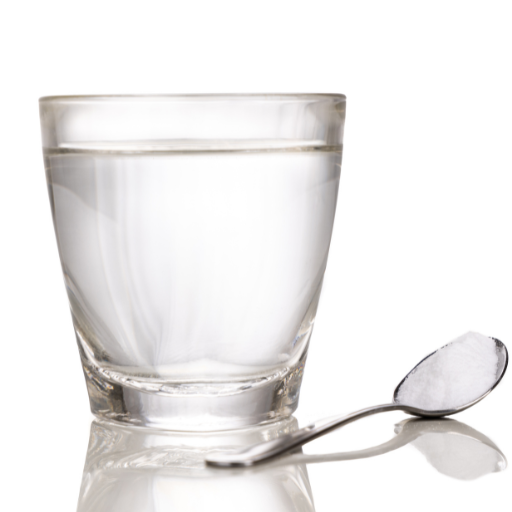
The first step on how to mix your own Epsom salt is to determine the right ratio size according to a plant’s needs. Subsequently, 1 tbsp of Epsom salt should be dissolved in one gallon of water for a foliar spray that can be used in general gardening purposes. This solution should then be applied directly onto the leaves one time per month. It is recommended to use a more diluted potted plants mixture containing 1 teaspoon per gallon of water as part of the regular watering schedule. For roses, at planting time mix half cup of Epsom salts with soil or dissolve 1 tablespoon per gallon and spray when plants start leafing out and again when they begin flowering. Soil testing performed before application will help determine exact nutrient requirements so as not to exceed them through overuse.
What Is the Recommended tablespoon of epsom salt per Gallon of Water?
The recommended amount of Epsom salt per gallon of water varies based on the type of plant and its specific needs:
- General Garden Use:
- Mix 1 tablespoon of Epsom salt per gallon of water.
- Apply as a foliar spray once a month.
- Potted Plants:
- Use a diluted mixture of 1 teaspoon per gallon of water.
- Incorporate this solution into the regular watering routine.
- Roses:
- At planting time, mix 1/2 cup of Epsom salt into the soil.
- Alternatively, dissolve 1 tablespoon per gallon of water and apply as a spray when plants leaf out and again during blooming.
These ratios are derived from recommendations found on authoritative gardening websites. They ensure the plants receive appropriate magnesium and sulfur levels without risking nutrient imbalance. Proper application and adherence to these guidelines will support healthy plant growth and development.
How to Make and Apply a Leaf Spray?
When preparing and using a foliar spray, start by dissolving one tablespoon of Epsom salt in one gallon of water; make sure that it is fully dissolved so as to prevent the spray nozzle from getting clogged. Transfer the solution into a clean garden sprayer and mix well by shaking. To avoid quick evaporation, apply the foliar spray during early morning hours or late in the evening where possible. Let it flow onto various parts on leaves including upwards and downwards thoroughly. In case of yellowing leaves or slow growth, repeat after every month or when needed. Also, follow specific advice concerning each category so that there will be no excess use and nutritional imbalance.
Common Questions About Using Epsom Salt for Plants

One commonly asked question when using Epsom salt on tomato and pepper plants is if it really enhances growth and production. The current consensus from major gardening websites is that magnesium content in Epsom salt can be beneficial, as it’s crucial for photosynthesis and promoting healthy, vigorous growth. For tomatoes and peppers, 1 tablespoon of Epsom salt for every gallon of water mixed together should be applied once monthly as drench. This prevents blossom-end rot which is caused by lack of magnesium, a condition that affects the entire plant. However, excessive use of this substance with symptoms such as leaf curling or other nutrient imbalance signs should be avoided.
Is It Safe to Use Epsom Salt on All Plants?
Epsom salt is good for many plants because it contains magnesium and sulfur but not in all cases. According to the latest information provided by the most popular gardening sites, one should think twice before using this substance due to Mg deficiency only. Over application can lead to nutrient imbalances like too much Mg interfering with other essential nutrients such as Ca and K uptake into the plant system. Roses, tomatoes, and peppers will benefit from Epsom salt supplements, while others may require different types of feedings. Therefore, evaluating the individual needs of every crop and type of soil before applying something harmful becomes important.
How Often Should Epsom Salts Be Used?
The frequency of applying the epsom salts depends on specific requirements for growing some particular species under given soil conditions. Typically, Epsom salts are recommended to drench plants at least once per month during active growth periods. This interval ensures a steady supply of magnesium without overdosing on this vital nutrient element. Using foliar spray or soil drenching with 1-2 tablespoons per gallon of water can boost the healthiness and productivity of certain crops like peppers or tomatoes (Stevens). However, a soil test will have to be done to establish the current magnesium levels in order to avoid nutrient imbalances and achieve maximum plant health.
Can Epsom Salt Be Overused?
Overusing Epsom salt can have negative effects on the health of plants. The excessive application of magnesium sulfate can cause its accumulation in the soil until there is an imbalance of nutrients. High amounts of magnesium ions, which are very important for plant growth and development, interfere with the uptake of other vital elements such as calcium and potassium. Consequently, plants may suffer yellowing leaves, reduced flowering and stunted growth. To prevent these symptoms it is necessary to apply Epsom salts at rates recommended by soil test results and at right intervals. Using Epsom salt properly ensures that plants get enough nutrients without a danger of overuse
Frequently Asked Questions (FAQs)
Q: What are the benefits of using Epsom salt for tomato plants?
A: Epsom salt helps tomato plants by providing magnesium and sulfur, which are essential for plant growth. Magnesium is critical for seed germination and helps plants produce chlorophyll, while sulfur aids in the formation of plant cell walls.
Q: How do I add Epsom salt to my vegetable garden?
A: To add Epsom salt to your vegetable garden, you can mix one tablespoon of Epsom salt with a gallon of water. Apply this solution around the base of each plant every two weeks for optimal results.
Q: How does Epsom salt prevent blossom end rot in tomatoes?
A: Blossom end rot in tomatoes is often due to a calcium deficiency. While Epsom salt does not provide calcium, its magnesium content helps improve the plant’s uptake of essential nutrients, potentially reducing the risk of nutrient-related disorders.
Q: Can I use Epsom salt for pepper plants as well?
A: Absolutely, Epsom salt benefits pepper plants in the same way it benefits tomato plants. Magnesium and sulfur help improve foliage and overall plant health, ensuring robust plant growth.
Q: What is the best method to add Epsom salt to tomato plants?
A: The best method is to sprinkle two tablespoons of Epsom salt around the base of each tomato plant every month. Alternatively, dissolve the salt in water and apply it as a foliar spray.
Q: How does magnesium sulfate benefit plants?
A: Magnesium sulfate, found in Epsom salt, helps plants produce chlorophyll and enhances nutrient uptake. This leads to greener foliage, better flower formation, and overall stronger plants.
Q: Should I conduct a soil test before adding Epsom salt to my garden?
A: Yes, a soil test can determine if your soil is deficient in magnesium or sulfur. This helps ensure you add Epsom salt in the right quantities for the benefit of your plants.
Q: Can Epsom salt improve seed germination in my vegetable garden?
A: Yes, magnesium in Epsom salt is critical for seed germination. Adding Epsom salt to your soil or as a foliar spray can help improve the germination rate of your vegetable seeds.
Q: How does Epsom salt help with nutrient uptake in plants?
A: Epsom salt enhances the uptake of essential nutrients like nitrogen, phosphorus, and potassium by improving root function and increasing chlorophyll production, leading to healthier and more productive plants.






